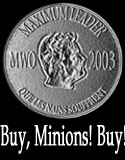Greetings, loyal minions. Your Maximum Leader had a great friend in the form of one of his college professors. Richard T. Couture was a very good and close friend of your Maximum Leader’s until his unfortunate passing a number of years ago.
Now, Richard was a professor of history. He specialized in the American Colonial period. He also had a great practical and learned knowledge of historic preservation. Particularly preservation of buildings from the colonial to ante-bellum period in Virginia. Your Maximum Leader says practical knowledge because he was self-taught in a great many fields like construction methods and basic structural engineering. He had to be. You see, Richard bought a run-down wreck of a ‘plantation’ house in 1963. Richard knew he wanted to live in a historic home, but he also knew he was a young man and couldn’t afford much. So, in 1963 he came across Bolling Island Plantation. Bolling Island was a ancient house (by American standards); and when he agreed to purchase the house, its dependencies, and 50 acres of land for $25,000 the consensus among his friends and family was that he had been taken to the cleaners.
Over the next twenty years he restored the house to its former glory. The oldest wing of the house was built by Thomas Bolling of Bolling Hall in 1771. The house was enlarged (and set in a Greek revival style - favored by Thomas Jefferson) around 1805. It was enlarged again in 1848. The house passed through various owners was on a long downward spiral by 1930. In 1963 many people who saw the house thought it should be torn down. But Richard was not one to tear down a building he could see restored.
By the time your Maximum Leader was befriended by Richard Couture, the house was mostly restored. The elements left incomplete were cosmetic. The house was listed on the National Register of Historic Places. Richard was regularly offered million dollar figures to sell the house to various members of the Richmond illuminati.
But Richard lived in the house until his death. It has since been sold. If your Maximum Leader had the means, he might have tried to buy it.
Anyhow…
Richard used to throw a big Christmas party every year on December 27th. It was one of the brightest stars in the constellation of fabulous Christmas parties thrown by the modern landed gentry of Goochland County, Virginia. Everyone who was anyone in the area came to socialize.
Your Maximum Leader was, to quote Shakespeare, a “pack-horse in the great affair” of the Christmas party. Often he would be carving meats (of which there were many - during the typical party there were consumed: a whole country ham (salt-cured 15 lbs) a whole ham (smoked and sugar cured 15-20 lbs), a whole roast beef (15 lbs), two or three turkeys (15lbs each), and probably 15-25 pounds of ground meats like meatballs and party sized sausages), helping with the cooking (of meats and other side dishes, pastries, and appetizers), or tending the bar/punch bowl. Now, for many many years there was an open bar at this party. Bourbon, Scotch, Gin, and Vodka were swilled in abundance. Indeed, your Maximum Leader probably saw more bourbon consumed at these parties than at any other time in a private home. Virginians love their whisky. (Or should your Maximum Leader say “Olde Virginians” love their whisky?)
In addition to the bar, there was the punch bowl. That ubiquitous feature of the holiday party. Of course, this being a serious party for serious people, there was no consideration given to making a punch for the teetotalers (of which there were few). The punch was, like the other libations at the bar, for drinkers. The standard punch for these parties was “black velvet.” Your Maximum Leader was, at first, offended by “black velvet.” The punch consists of two bottles of Guiness Stout to one bottle of Champagne. This whole concept offended your Maximum Leader’s sensibilities. It seemed like a waste of good beer AND a waste of a perfectly good bottle of Champagne.
Excursus: Once there was a great error made in mixing the black velvet. Luckily, it was not made by your Maximum Leader. Normally the champagne used for making the punch was not really champagne but inexpensive sparkling wine from California. It was typical of us to buy a few cases of sparkling wine by Taylor or some other brand you could get for about $8-10/bottle. Stash the cases in the liquor closet until they needed to be chilled down. If the weather was cold, the bottles were chilled on an outdoor porch. If the weather wasn’t cold enough, they were iced in coolers on the outdoor porch. Now as you might expect, since it was a Christmas party afterall, many guests brought gifts for Richard. When you live in a restored plantation on the James River among the landed gentry of Virginia, the typical gift to bring to a party — regardless of the time of year — is alcohol. Richard, like your Maximum Leader, was a Scotch drinker. So most guests brought him Scotch. Indeed, so many bottles of Scotch were brought that Richard rarely had to go out to the liquor store to buy his own until June. But sometimes the guest would bring wine… Or Champagne. One year, one of the guests brought Richard a bottle of Bollinger. Not knowing exactly where to put the Bollinger, and not wanting to ask anyone. The guest put it in the cooler with the Taylor that was chilling for the black velvet. Your Maximum Leader knows that his readers are smart and they can put together what happened. The error was discovered the next morning when we were participating in the annual post party bottle toss. (Excursus within Excursus: The bottle toss was when we (Richard and those friends, numbering about 10 who helped him throw the party) would take the empty beer, liquor and champagne bottles down to a little revine behind the house that had been used since about 1777 as a “dump” for the house residents. Richard had found bottle shards, animal bones, buttons, household remains, in this revine and decided that once a year we’d do our best to add to the archeological record for our time.) Richard happened to pick up the empty bottle of Bollinger and ask why we (his friends) had consumed a $100 bottle of champagne without a) asking or b) sharing.
Well… One year, while planning for the Christmas party, Richard mentioned that having the open bar was awfully expensive; and guests seemed to have grown tired of “black velvet.” He wanted to try something different. Something new — to us at least. And something alcoholic — of course. So a number of us took it upon ourselves to find something interesting to serve as a punch at the party. Richard was the one that found the punch we were to use. He said he found it in an early 19th Century cookbook he had. The punch was described as something that was served near the docks in major colonial seaports. This was “Fish House Punch.”
When the time came for the party we got out a huge copper cauldron Richard had had in the basement for decades. We did our best to clean it up, but it wouldn’t come shiny clean for us. We started mixing the punch. We squeezed limes, we squeezed lemons. We dumped in gallon after gallon of liquor. We stirred. Then we sampled. (NB: the copper cauldron did shine after the punch was finished the next day.)
We guessed it was called “Fish House punch” because after a few cups you could probably work in a colonial fish house without being offended by the smell.
We chilled down the punch. To add “color” to the punch floated various fruits in it, mostly peaches. A jar or two of marachino cherries (and their juice) might also have been added to the mix.
We served the punch all night. It was the only choice of alcoholic beverage. It was tepidly received at first. Then people really started to drink it. We noticed that people sort of worked their way through the first cup, then could throw down subseqent cups with reckless abandon. Some of the older matriarchal types didn’t drink the punch, but did come by to request that we fill a punch cup with “those wonderful peaches from the punch bowl.” Those older ladies were plastered by the end of the night. Your Maximum Leader remember helping to carry some of them to their cars…
Anyhoo… In case you are wondering what exactly was in Fish House Punch… Here you go…
Fish House Punch.
Into a great bowl mix:
The juice and pulp of 25-30 limes
The juice and pulp of 10-15 lemons
1 part dark rum
2 parts white rum
1 part brandy (peach brandy if available)
1 part water (club soda if you want to moderize the mix)
1 part brown sugar
When your Maximum Leader helped to mix it, we took a “part” to equate to “a gallon” with the liquid and a “part” of sugar was about 5 pounds.
In case you were wondering… Richard only served the Fish House Punch one year. We in Virginia are a conservative people. We love our traditions. Our politicians speak of George Washington, Thomas Jefferson, James Madision, and Patrick Henry as though they have just stepped out of the room for a moment’s respite. And say what you will, if you have a Christmas party every year for decades; and at every party serve the same punch; people notice. And they miss it if you take it away. So, the year after the Fish House Punch experiement, it was back to Black Velvet and an open bar…
Now… If you are still reading this, you might be wondering, why is my Maximum Leader going on about this today. No reason really. Perhaps he was a little melencholy while remembering his friend Richard Couture… Perhaps he was spurred to write by the fact that he has some rum in the Villainschloss liquor closet and is thinking of ways to get rid of it… Perhaps your Maximum Leader wanted to show Skippy that if he (Skippy that is) and the Velociman ever come to the Villainschloss, your Maximum Leader will do what he can to facilitate them having a good time. (It is no Chatham Artillery Punch, but it is the best your Maximum Leader has at hand right now.)
Or perhaps your Maximum Leader just had some time to write at leisure and this is what he came up with…
Carry on.





